Sevilla hosted Athletic Bilbao at the Ramon Sanchez-Pizjuan stadium in the second leg of their Copa del Rey round of 16 fixture, marking the third occasion these sides have met in as many games. With a La Liga fixture sandwiched between the two-legged cup tie, there was an air of familiarity between the sides.
With Sevilla in third place in La Liga and looking to close the gap on Barcelona, and Athletic facing the threat of relegation for the first time in their history, both sides could be forgiven for having their priorities elsewhere. Nonetheless, Sevilla would see this as a realistic chance of silverware this season, while Athletic have real pedigree in this competition as the second most successful side in its history with 23 titles.
Taking a 3-1 advantage into the fixture after a convincing win at the San Mames a week ago, Sevilla scraped through 3-2 on aggregate. A late scare added some drama that had been lacking throughout a majority of the game.
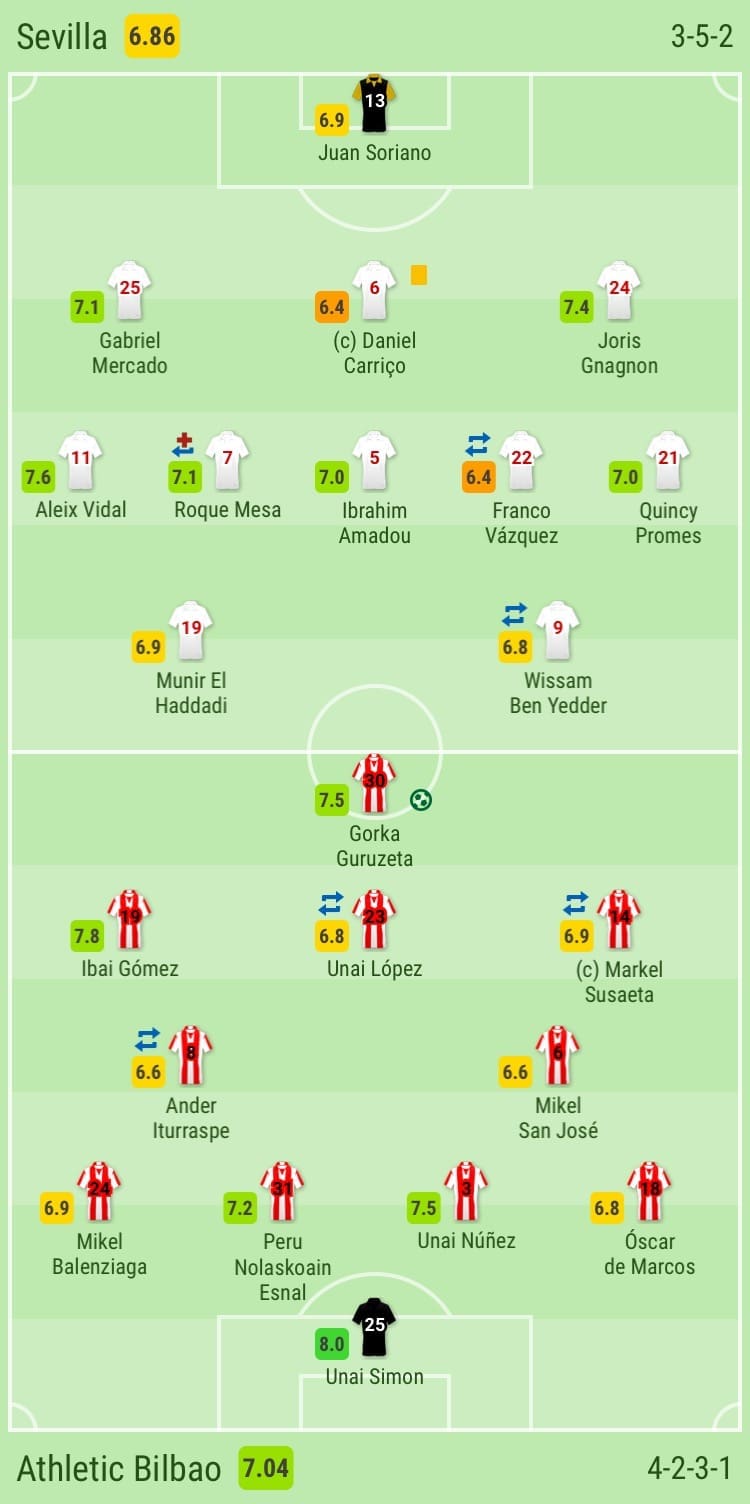
How they lined up
Sevilla lined up once again in Pablo Machin’s favoured 3-5-2/5-3-2 system, despite naming a much-changed team from the 2-0 reverse against Athletic at the weekend. Only Roque Mesa, Wissam Ben Yedder & Joris Gnagnon retained their places in the side. In-form striker Andre Silva had to settle for a place on the bench.
Athletic also rotated heavily. Setting up in 4-2-3-1/4-3-3, manager Gaizka Garitano made 10 changes to his side, with only Oscar de Marcos keeping his spot in the team.
With so many changes for both sides and priorities perhaps elsewhere, it was understandable that this game wasn’t of the highest quality. Players less used to playing with each other will not have the same level of communication and connection. For this reason, there was a distinct lack of flow to proceedings.
Nevertheless, there were some interesting aspects on show, particularly in the match-up between systems. Whereas Sevilla used wing-backs in their 3-5-2 system, they were faced with Athletic’s more standard back-four structure. Unsurprisingly, the most interesting theme of the match was going to be how each team approached the wide areas, and the match-ups the clash of systems brought about.
Athletic Bilbao’s issues in possession
Athletic began the game dominating possession without offering any real offensive threat, in part due to a conservative approach when in possession.
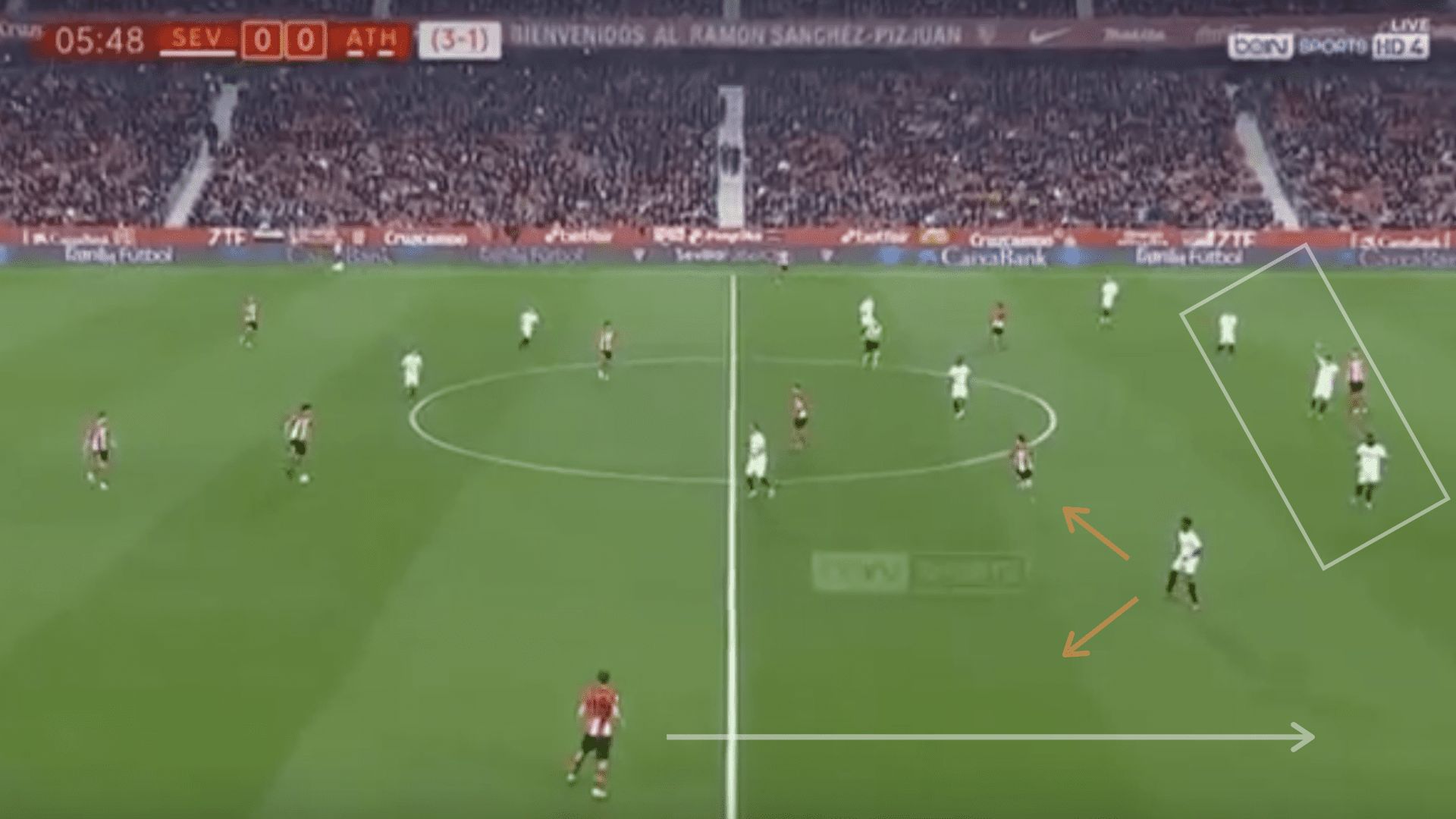
In this example, Sevilla are in their 5-3-2 defensive shape but Athletic miss the opportunity to offer a threat to the backline. With just one player (Guruzeta) occupying Sevilla’s last line, the three centre-backs can step out of their shape at any point without the threat of someone running into depth. Notice also how the right-sided Susaeta has moved inside to the half-space drawing the attention of Promes, Sevilla’s left wing-back. This would have been a perfect opportunity for De Marcos to sprint into the vacated space on the flank in behind Promes, but he passes up the opportunity.
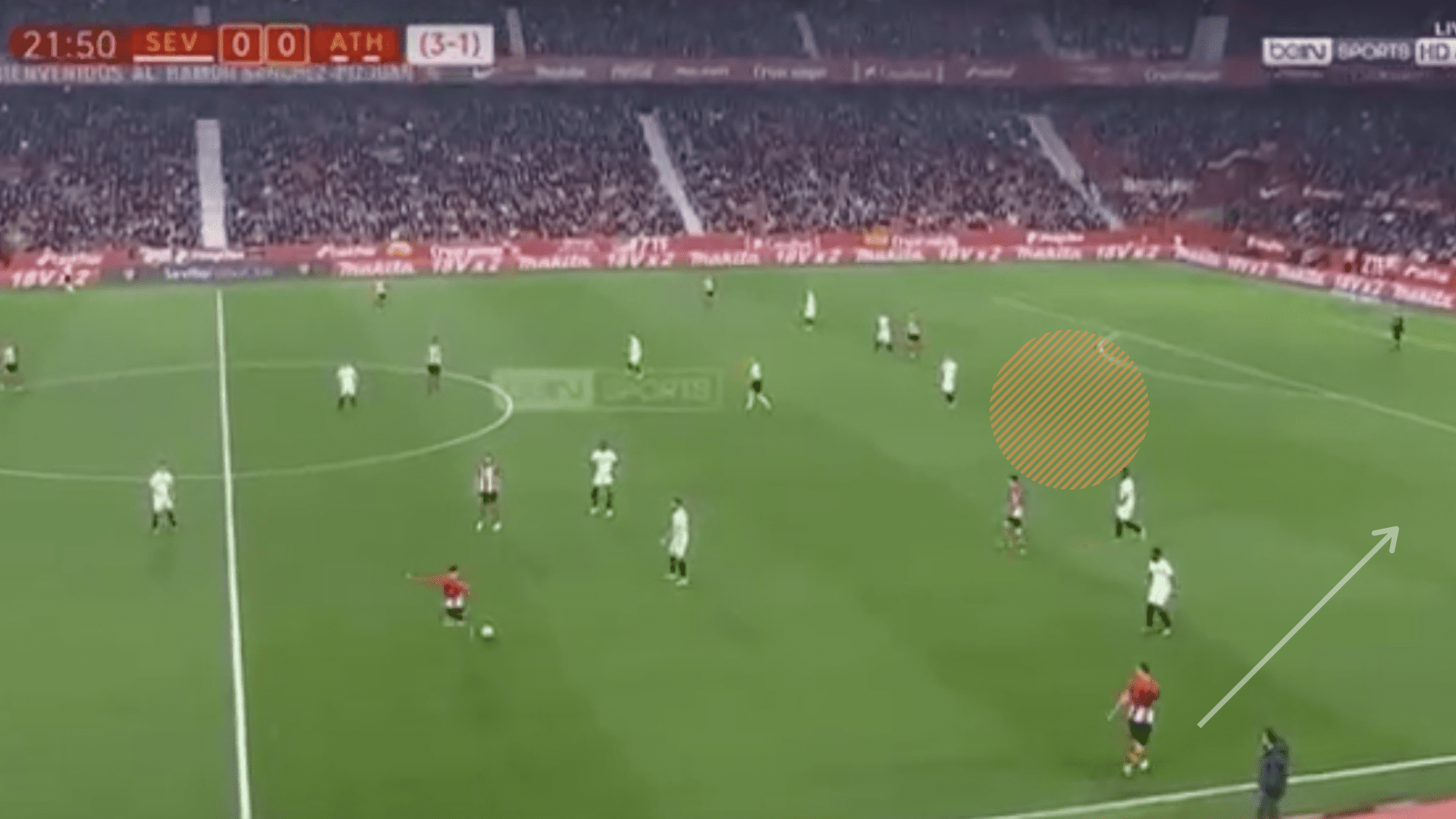
This example once again shows a disconnect in Athletic’s attacking play, as De Marcos’ movement once again provokes an opportunity to be exploited. This time he uses a high to low movement (using a double movement to separate himself from his marker) which attracts Gnagnon, the left-sided centre-back, to follow him.
Notice the gap left between centre-backs which is begging for the centre forward to use a blindsided run, or a midfield third man run to exploit this space. Once again, De Marcos does not make a run in behind and around the back of Promes.
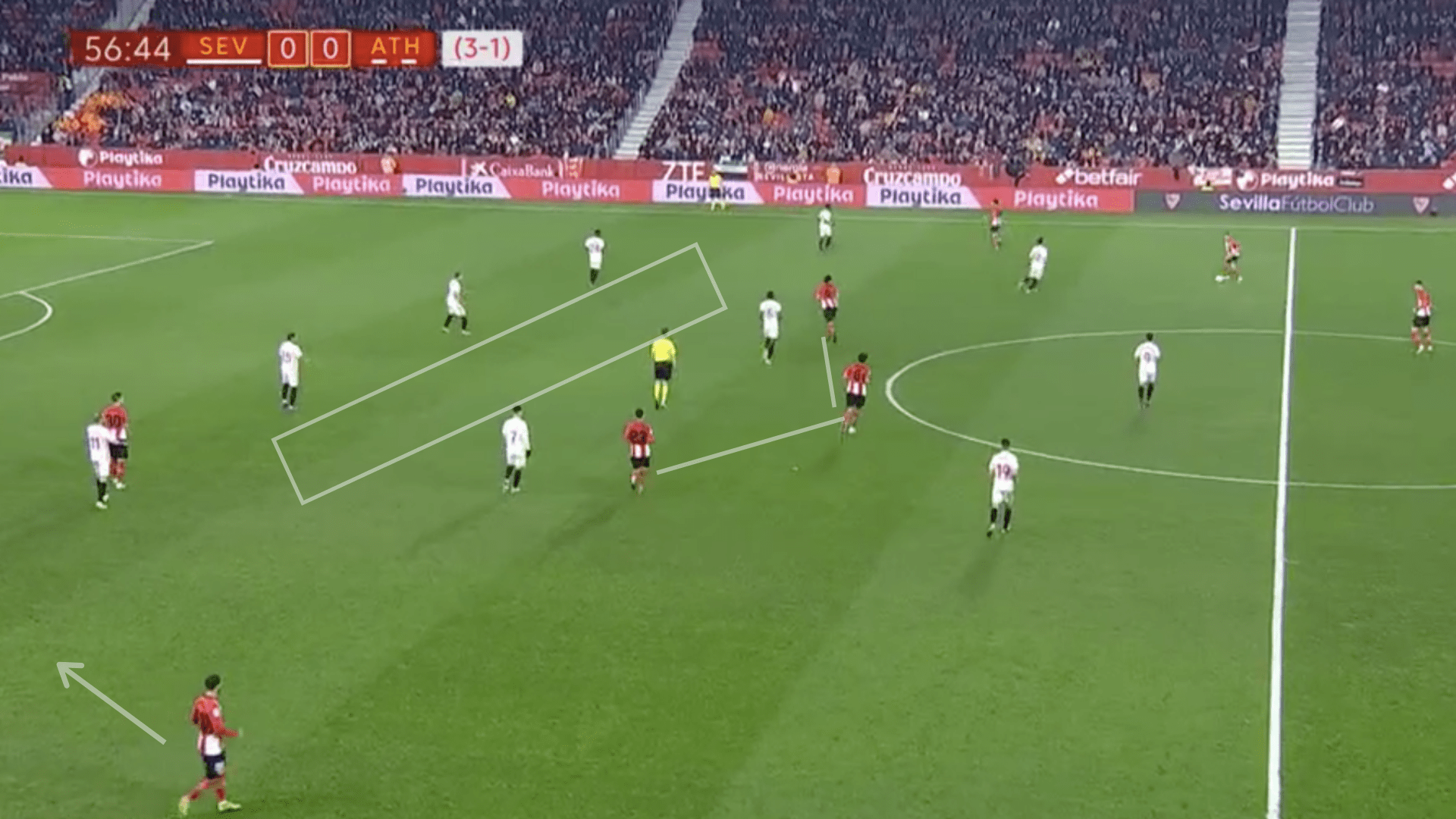
This example shows a further issue with Athletic’s build up play. Notice how there is no presence in between the midfield and defensive lines, with only Guruzeta occupying the defensive line. This was a theme throughout the match, despite Athletic trailing by two goals from the first leg. Here their midfield trio are all in front of Sevilla’s block and not looking to receive in between the lines.
Another theme throughout the game was Athletic’s conservative positioning of their full-backs. In this instance, the left-back Balenziaga could position himself higher to pin back Vidal, Sevilla’s right wing-back, and threaten the last line of defence. Whilst this would make Athletic vulnerable in transition, it is perhaps a risk you may want to take when trailing by two goals in a cup tie. Predictably, Athletic were forced into a speculative long ball to the lone centre-forward which was dealt with easily by Sevilla.
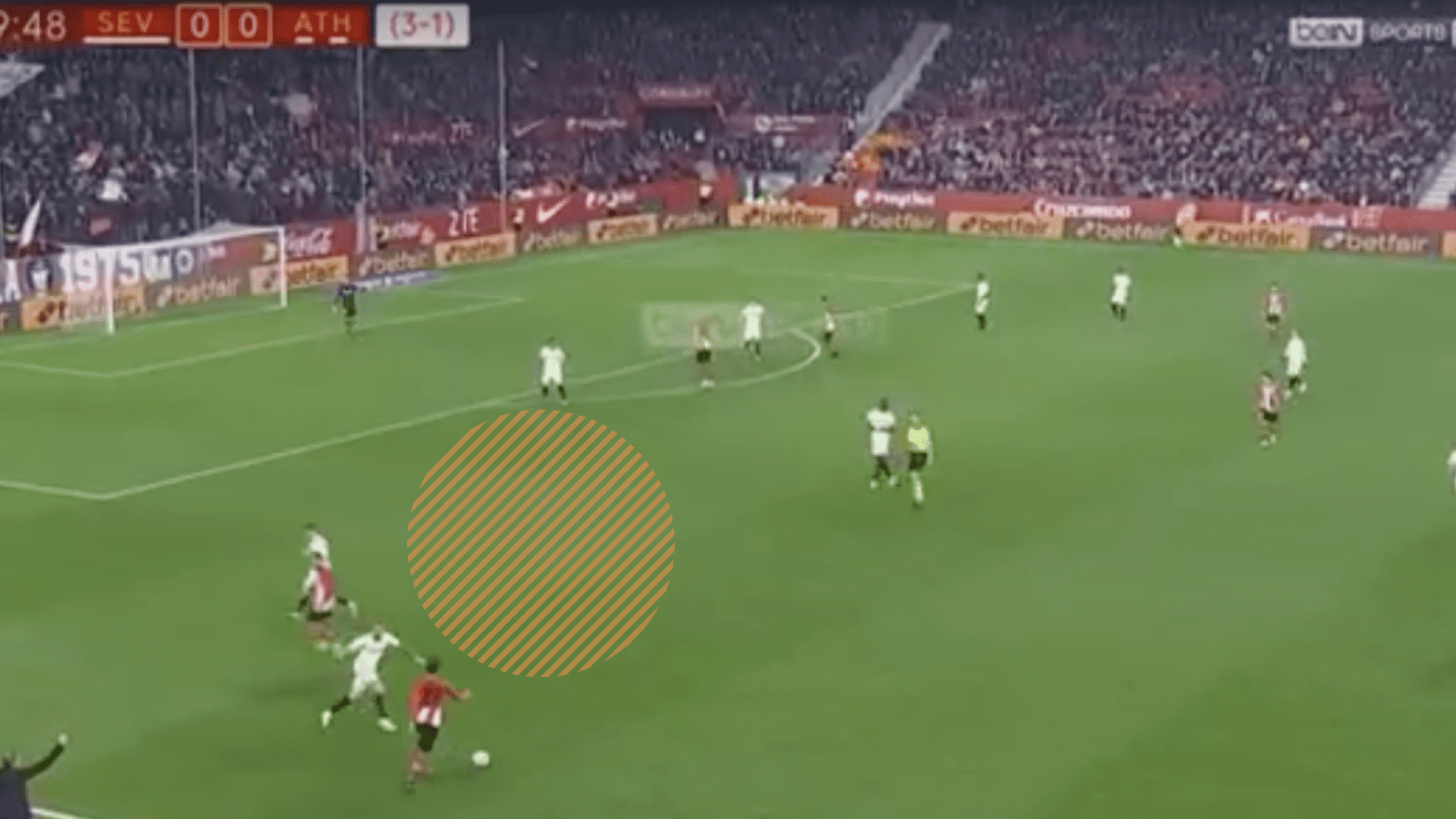
Athletic found progressing the ball through the middle of the pitch difficult throughout, so they would often use the wings. Again, a lack of coordinated movements was evident as they failed to get inside and in behind the Sevilla block.
In this example, the left-sided wide player, Ibai Gomez receives as Balenziaga makes a forward run to drag Sevilla’s covering central midfielder out of position. This opens up a large gap in the half-space (highlighted). However, no Athletic player exploits this newly created space with a chance to run at an exposed backline. Ibai Gomez has to resort to recycling the ball backwards, and the opportunity goes begging.
After a lot of non-threatening possession, it was noticeable that Athletic’s most clear-cut opportunity in the game came from a direct counter-attack via a long throw from goalkeeper Unai Simon.
Sevilla on the front foot
After the first half in which Athletic had dominated the ball with little progression and penetration, Sevilla assumed control after the break. Chances had been at a premium in the first half, with Sevilla content to not exert too much energy in a game they did not have to win.
They did, however, step it up in the second half, with wing-backs Vidal and Promes coming into the game far more with their aggressive high positioning when Sevilla were in possession. They were covered at all times by the back three and the diligence of Ibrahim Amadou who was always stationed behind the ball to defend counter-attacks. These four players behind the ball were more than enough to cover any counter-attacks, particularly with an Athletic forward line lacking in pace and numbers.
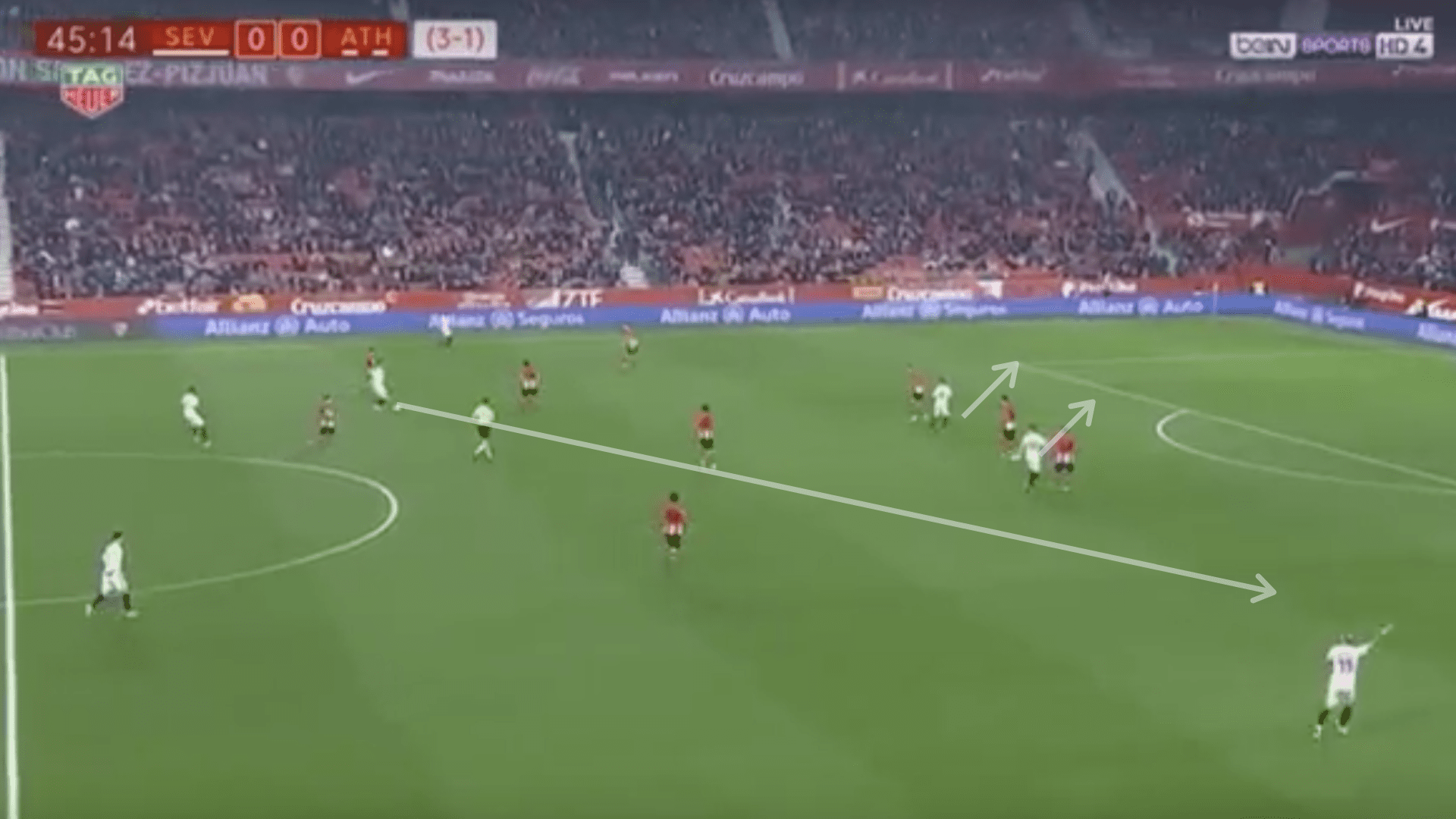
The high positioning of both wing-backs almost produced a goal in the opening exchanges of the second half. Here Vidal is occupying the last line with the intelligent against-the-grain movement of Sevilla’s two forwards opening up space for a diagonal switch. With Vidal arriving in acres of space, he is able to pick out Munir who guided his shot first time into the side-netting.
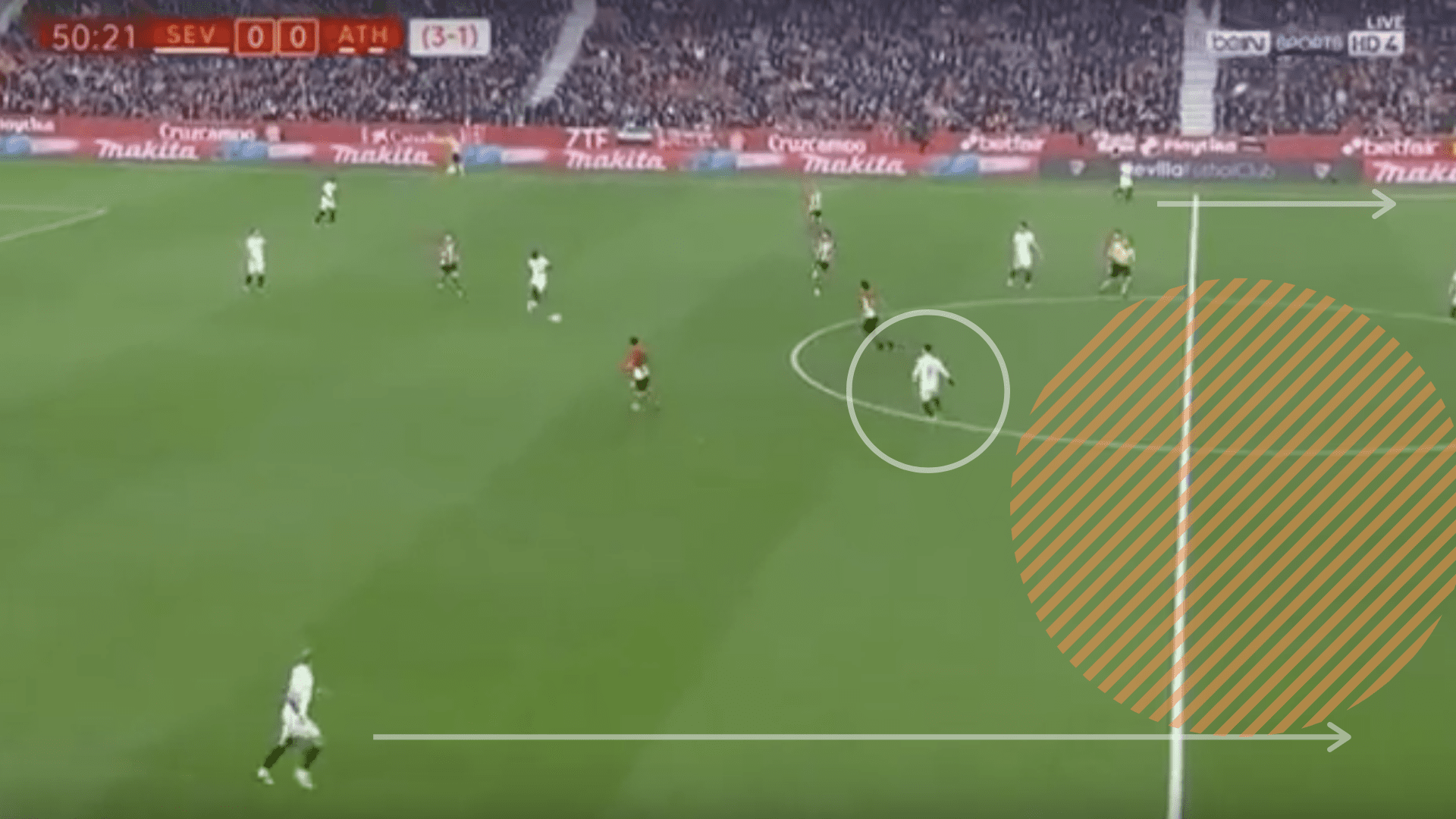
Here Sevilla are well positioned to progress the ball through an inadequate Athletic press. They do not screen the forward diagonal pass, and leaving far too much space for Roque Mesa (circled) in between the lines to turn and drive at an exposed defence. As soon as the ball has been played into Mesa, this is a trigger for both Sevilla wing-backs to join the attack. This resulted in a dangerous low cross from Vidal, the right wing-back.
The ‘English’ goal
Despite the issues Athletic faced in their build-up and wide play, they took an unexpected lead in the 77th minute through Gorka Guruzeta, the 22-year-old’s first goal for Los Leones.
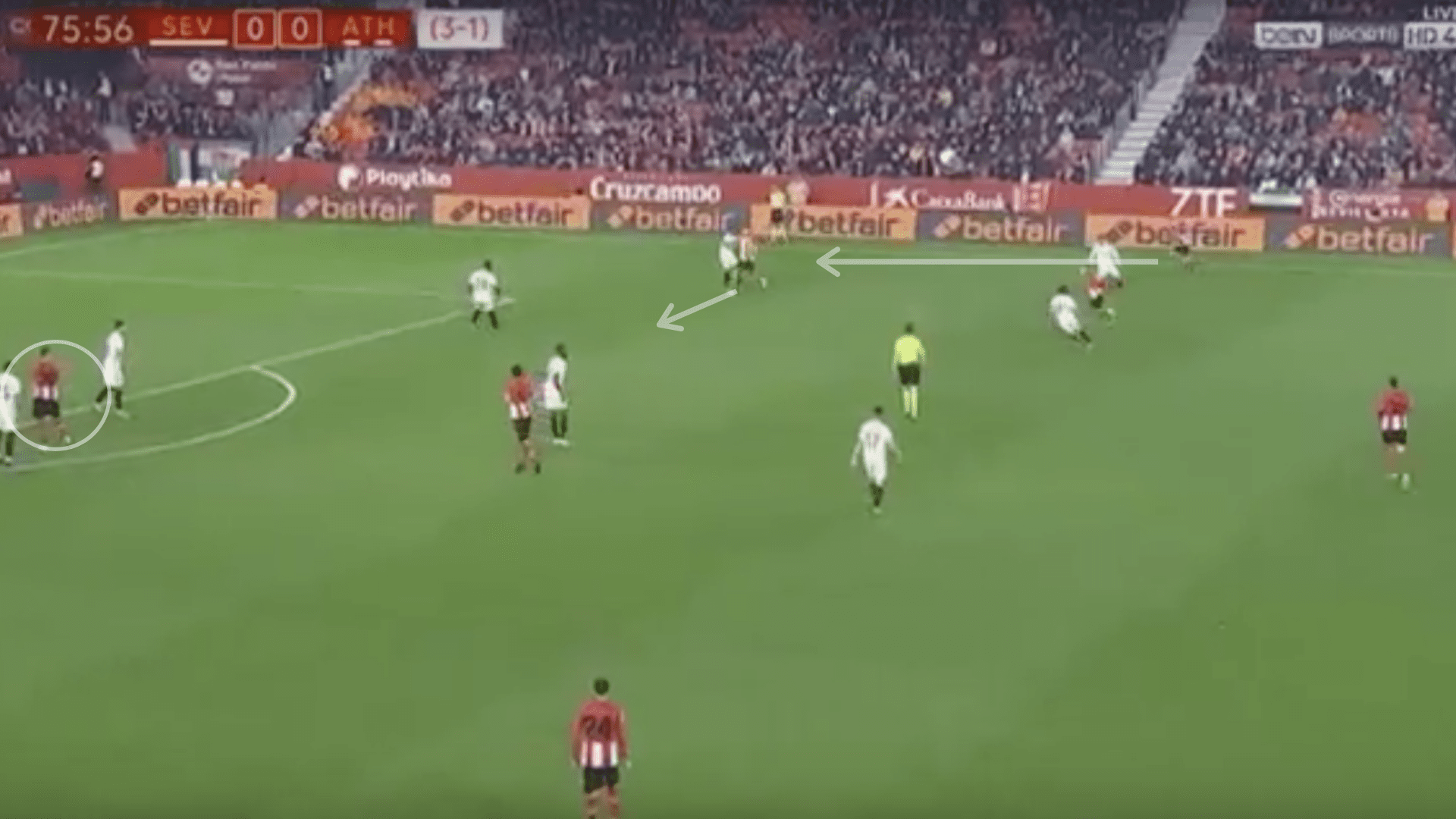
At last, Athletic put together a good sequence on the right flank where a wide rotation with Susaeta coming inside dragging his marker with him freed up right-back De Marcos to put in a cross. Guruzeta met the ball with a powerful header from a standing start, the ball looping into the top corner. It was the classic ‘English’ goal and a wonderful headed finish.
It was an interesting goal because it tapped right into the psyche of Athletic. The club is one that has British heritage running through it, as Jonathan Wilson wrote:
“Athletic is the home of the giant defender and the battering-ram striker, of rain and mud, and roaring fans, of long balls and powerful headers”.
Whilst the goal was only a side-note of this cup tie, it demonstrated a long-held characteristic of Athletic and maybe a potential tool for them to steer clear of relegation in La Liga. They may consider sending a few more players into the box in future if this tactic is to be effective, however.
A glimpse into Machin
Once Athletic had got back in the tie with Guruzeta’s goal, they had 13 minutes plus stoppage time remaining to score a second and progress on away goals. Suddenly, Athletic had their tails up and decided the most effective route to a winning goal indeed lay in their English roots using long balls and crosses.
The manner in which Sevilla responded may have just given us a glimpse into the philosophy of Pablo Machin. Rather than drop deep, defend their goal and try to hang on to their slender advantage, Sevilla pushed for a winner and decided the best course of action was to push players forward in possession and defend turnovers high up the pitch.
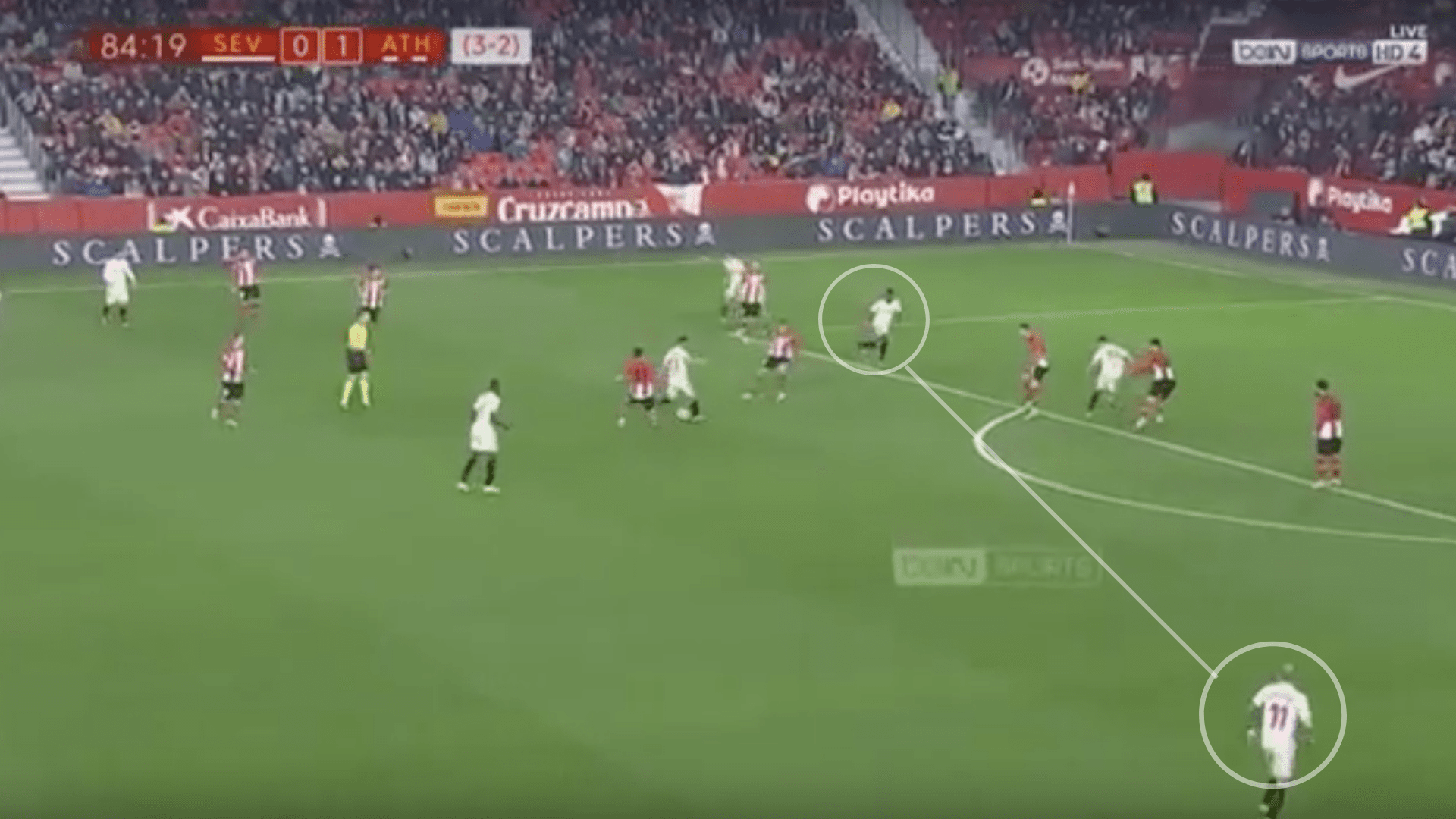
With a narrow one-goal margin, Sevilla maintained an aggressive attacking mentality. Here, both wing-backs highlighted are high up the pitch, with eight Sevilla players (one out of the picture) inside Athletic’s half.
On this occasion they turnover the ball but immediately counter-press to thwart any potential counter-attack from Athletic.
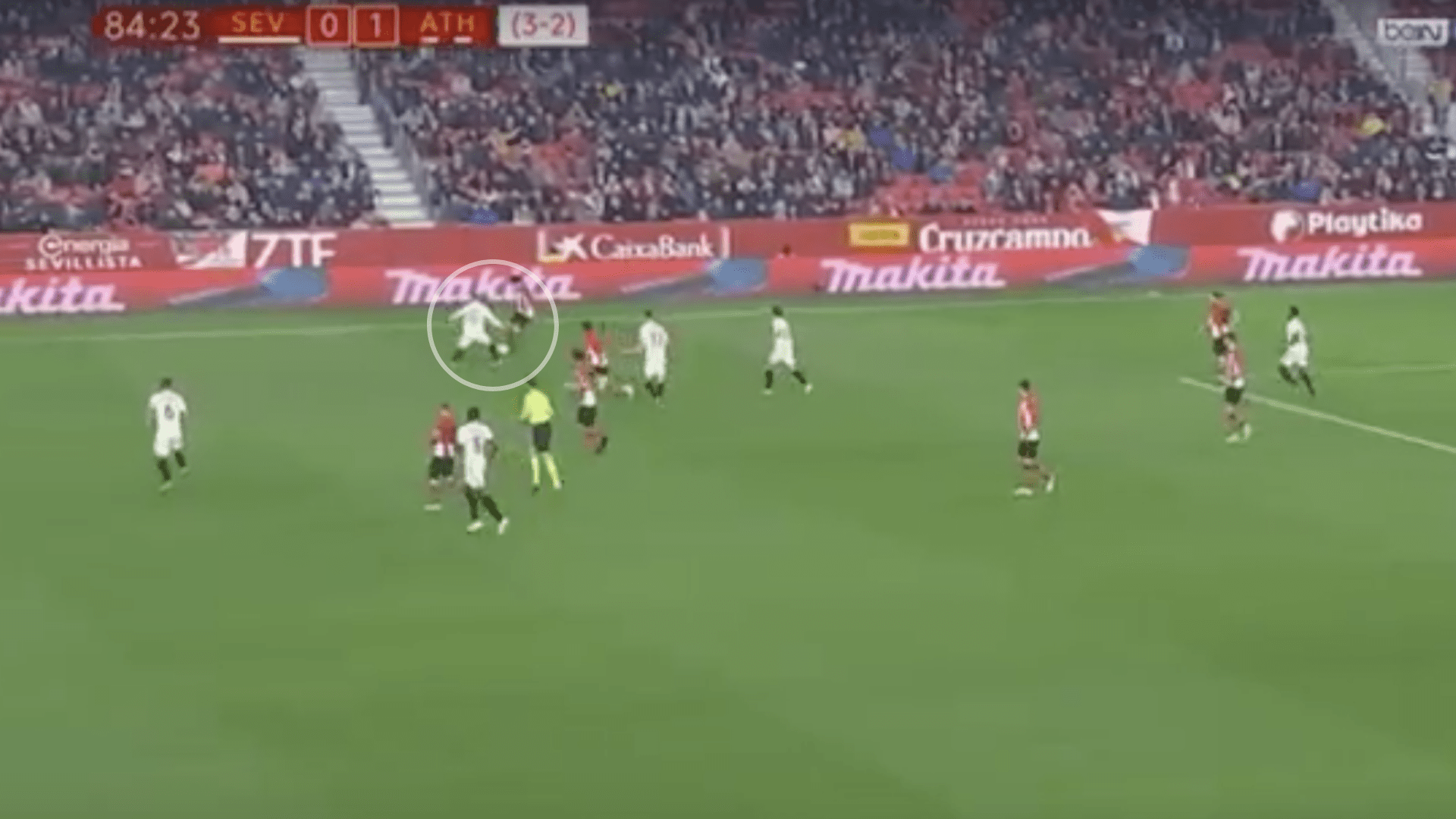
Rather than dropping off, which is to be expected in this instance, the Sevilla player closest to the ball immediately presses the ball carrier. The Sevilla block steps up to close the spaces between lines, and all routes of escape are blocked off.
This may be revealing of Pablo Machin. In adopting an attitude that prioritised attack as the best form of defence, was this revealing of his wider philosophy of the game? The question remains as to whether he will replicate this against one of the La Liga heavyweights, or in even in the latter stages of the Europa League.
It is, however, likely that this approach was schemed from more of a tactical perspective. With Sevilla successfully managing to push Athletic back with the high positioning of their wing-backs throughout, they successfully isolated Guruzeta as the striker. With little threat in behind, a theme we saw all game from Athletic, condensing the play high up was a successful ploy.
It will be interesting to watch how Machin would approach a similar situation in the future, and whether he is a coach wedded to a philosophy, or one that reacts flexibly to the situation he is faced with.
Conclusion
This was, on the whole, quite a scrappy match that never really fully got going, which is understandable due to the wholesale changes to personnel both teams made. Despite losing the game 1-0, Sevilla will feel like they should have put the tie to bed earlier with the better quality of chances they created.
Whilst this was far from a tactically enthralling spectacle, there were several aspects that will be interesting to watch out for in the remainder of the season. In particular, the mechanisms of Machin’s back-three system and the use of both wing-backs hold the key to how Sevilla will function.
For Athletic, they were not tactically effective enough when in possession of the ball to damage Sevilla, but there are some signs a more basic and direct approach may benefit them. You sense that with relegation a distinct threat they will not be too fussed to exit the Copa del Rey, although it may disappoint fans who are looking for their first Copa since 1984. Staying in La Liga however should be the utmost priority for the only club other than Barcelona and Real Madrid never to have been relegated from the top division in Spain.
If you love tactical analysis, then you’ll love the digital magazines from totalfootballanalysis.com – a guaranteed 100+ pages of pure tactical analysis covering topics from the Premier League, Serie A, La Liga, Bundesliga and many, many more. Buy your copy of the January issue for just ₤4.99 here, or even better sign up for a ₤50 annual membership (12 monthly issues plus the annual review) right here.

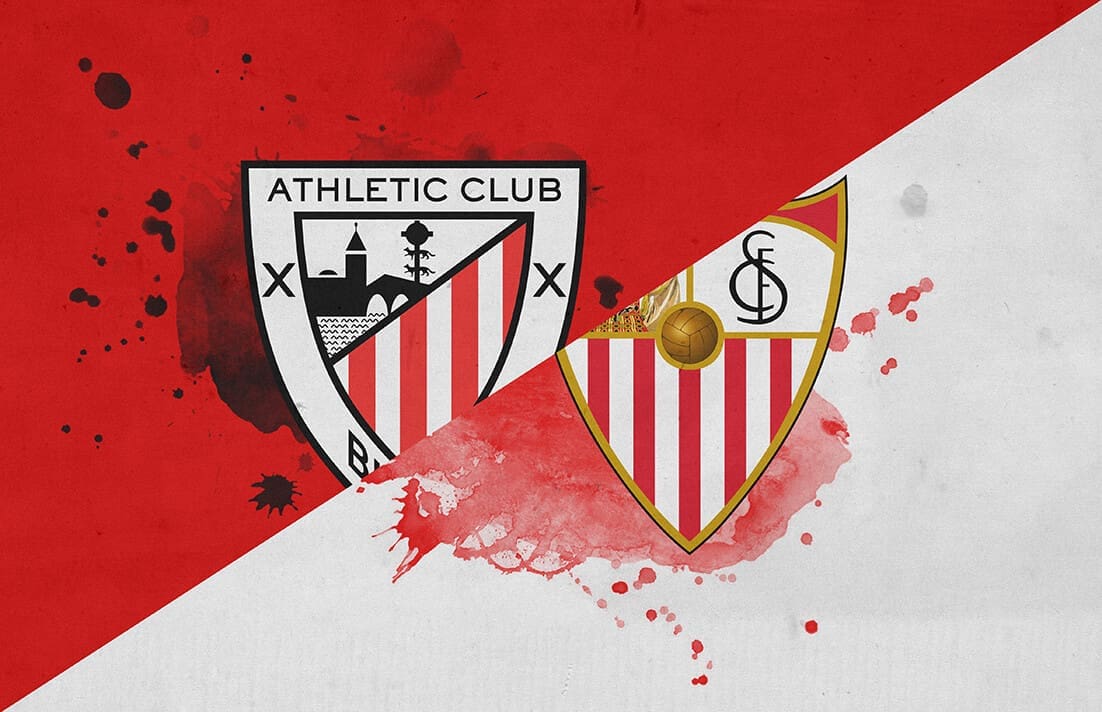



Comments